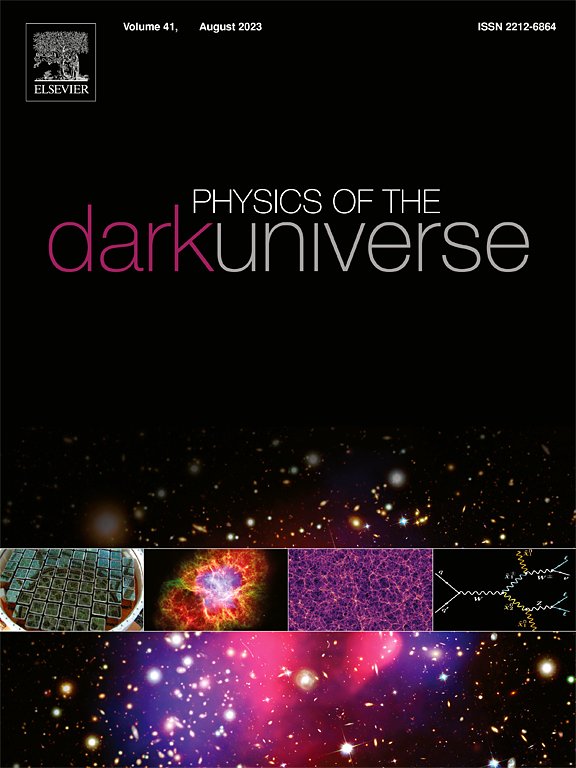修正Chaplygin气体对带电薄壳虫孔模型的影响
IF 5
2区 物理与天体物理
Q1 ASTRONOMY & ASTROPHYSICS
引用次数: 0
摘要
在本研究中,在f(R,T)引力的框架内探索构建虫洞几何形状的可能性,其中R为里奇标量,T表示能量动量张量的轨迹。我们采用Visser剪切粘贴技术,通过连接Reissner-Nordström (RN)时空的两个相同副本来构建薄壳虫洞,这允许通过引入喉道来形成虫洞几何形状,喉道是两个时空副本的边界,其中应力-能量张量分量使用Lanczos方程确定。为了得到虫洞解,我们的分析集中在一个静态的、球对称的时空上,并将修正的Chaplygin气体(MCG)状态方程(EoS)作为外来物质的来源。在各向同性背景下,在静态平衡状态周围的小线性扰动的假设下,对控制系统的动力学方程进行了检查,这对于评估虫洞结构的稳定性至关重要。我们从理论上和图形上展示了我们的发现,强调了f(R,T)模型和EoS的各种参数选择下虫洞解的行为。结果表明,不同的参数设置可以得到稳定和不稳定的虫洞解,证明了在这种改进的重力框架下保持可穿越虫洞几何形状的可行性。我们所考虑的最小耦合f(R,T)引力模型支持各种虫洞配置,其中一些可以在线性扰动下实现稳定性。这些发现有助于更广泛地理解修正引力理论中的奇异结构及其天体物理意义。本文章由计算机程序翻译,如有差异,请以英文原文为准。
Impact of modified Chaplygin gas on electrically charged thin-shell wormhole models
In this study, the possibility of constructing wormhole geometries is explored within the framework of gravity, where is Ricci scalar and represents the trace of the energy–momentum tensor. We employ the Visser cut-and-paste technique to construct thin-shell wormholes by joining two identical copies of the Reissner-Nordström (RN) spacetime which allows the formulation of wormhole geometries by introducing a throat, the boundary of the two spacetime copies, where the stress–energy tensor components are determined using the Lanczos equations. To derive wormhole solutions, our analyses focus on a static, spherically symmetric spacetime and incorporate the modified Chaplygin gas (MCG) equation of state (EoS) as a source of exotic matter. The dynamical equation governing the system is examined under the assumption of small linear perturbations around a static equilibrium state within an isotropic background which is critical in assessing the stability of the wormhole configurations. We present our findings theoretically and graphically, highlighting the behavior of wormhole solutions for various parametric choices of the model and the EoS. The results indicate that distinct parameters set yield stable and unstable wormhole solutions, demonstrating the feasibility of maintaining traversable wormhole geometries in this modified gravity framework. Our considered minimally coupling gravity model supports a variety of wormhole configurations, some of which can achieve stability under linear perturbations. These findings contribute to the broader understanding of exotic structures in modified theories of gravity and their astrophysical implications.
求助全文
通过发布文献求助,成功后即可免费获取论文全文。
去求助
来源期刊

Physics of the Dark Universe
ASTRONOMY & ASTROPHYSICS-
CiteScore
9.60
自引率
7.30%
发文量
118
审稿时长
61 days
期刊介绍:
Physics of the Dark Universe is an innovative online-only journal that offers rapid publication of peer-reviewed, original research articles considered of high scientific impact.
The journal is focused on the understanding of Dark Matter, Dark Energy, Early Universe, gravitational waves and neutrinos, covering all theoretical, experimental and phenomenological aspects.
 求助内容:
求助内容: 应助结果提醒方式:
应助结果提醒方式:


